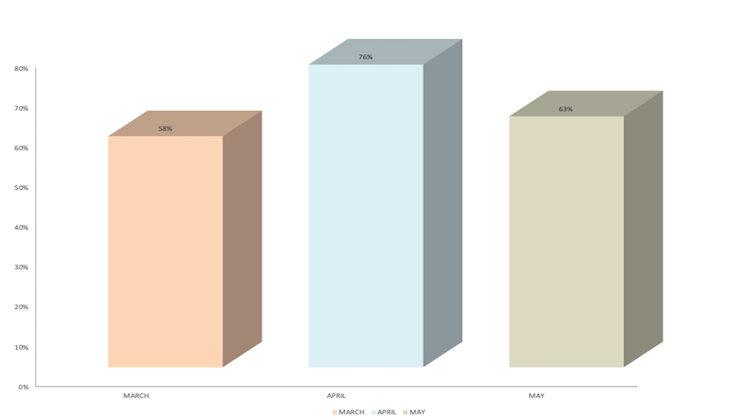
2020 VOL. 7, No. 3
Abstract:
Objective
The purpose of this paper was to share teaching and learning experiences during the COVID-19 pandemic and mandated university closure.
Methods
A cross-sectional study was conducted among all eligible students and faculty members using voluntary anonymous questionnaires. To capture the attitudes and perceptions of respondents, five-point Likert scale questions were used.
Results
A total of 865 (58%) students and 57 (51%) faculty members participated in the survey. Uptake of e-learning platforms increased by 15.4% for students, 43.0% for faculty and by 22.3% in courses. The overall students’ strength of consensus measure of perception on accessibility of platforms was 65% and support entities 79%. About 70% of students owned a smartphone as a learning device. More than 67% of the students highlighted the cost of Internet bundles as a major challenge.
Conclusion
Shifting from blended learning to online learning during the lockdown was feasible given the pre-planned e-learning practices.
Keywords: COVID-19, online learning, blended learning, students and faculty experiences.
The emergency of SARs-CoV-2 (COVID-19) has disrupted many aspects of daily living including normal functioning of institutions of higher learning (Reimers et al, 2020). The World Health Organisation (WHO), defines COVID-19 as infectious disease caused by the most recently discovered coronavirus, resulting in a spectrum of illness ranging from asymptomatic infection to the common cold to severe acute respiratory syndrome. According to recent publications (Naciri et al, 2020) the education sector is one of the largest and most delicate social sectors that has been heavily affected by the pandemic in various countries around the world.
In response to the coronavirus outbreak, many governments worldwide, including African governments, Tanzania included, took the decision to close educational institutions to contain the disease. Medical education faculty and students have been forced to adapt to the new ways of learning, such as shifting their preclinical curriculum to e-learning on videoconferencing platforms like Moodle and Zoom to deliver medical education content in the absence of face-to-face teaching (Rose, 2020). However, researchers in educational technology are lately concerned with the speed of shifting to online learning, whereby a list of institutions are shifting precipitously with little or no careful instructional design and planning (Hodges et al, 2020).
According to Watson (2008), moving instruction online seems to bring flexibility of learning to any location. Online learning basically refers to the idea of using online tools for learning. Studies show that for more than a decade medical schools have been working to transform pedagogy by reducing lectures, using technology to enhance active and self-directed learning, and promoting individualised and inter-professional education (Irby et al, 2010; Skochelak et al, 2017). With the current pandemic disruption forcing a shift in medical education to online, this paper aims to describe the processes and experiences in teaching and learning during the COVID-19 pandemic.
At the Kilimanjaro Christian Medical University College (KCMUCo) there has been utilisation of various e-platforms to enhance teaching and learning over the years (Lisasi et al, 2014; Tibyampansha et al, 2017; Vovides et al, 2014). This transformation started in 2010 after the Kilimanjaro Christian Medical Centre, Medical Education Partnership Initiative (MEPI) project identified a gap in the delivery of a robust medical education curriculum and invested heavily in upgrading the Information and Communication Technology (ICT) infrastructure.
At the beginning, for the purpose of ensuring a successful deployment of the new technology, the Learning Management System (LMS) was introduced to help enhance teaching and learning, which empowered KCMUCo to have both face-to-face and online learning, hence, blended learning. The good services offered by the technology have allowed utilisation of e-learning systems such as Leo, Moodle, Lecturio and other e-learning tools.
Leo is a full-featured education management system designed to simplify the delivery of a complex medical curriculum. The system was designed and built at the Duke University School of Medicine beginning in 2005; it has been used at KCMUCo since 2011 for curriculum mapping, content management, assessment, scheduling functions, and support team-based learning.
Lecturio is a platform that provides education material in the fields of medical science, clinical science, pre-med and nursing. KCMUCo has been utilising the system since early 2019.
Moodle is an open source LMS that provides online interaction between students and teachers and also supports offline learning via its application. KCMUCo has been using Moodle since 2014 mainly as a backup system for online examinations.
Because of COVID 19, all the universities in Tanzania were mandated to close on March 18 2020 to contain the spread of pandemic. However, with KCMUCo the ICT investment built over previous years and the pre-existing e-learning practices rescued the situation in maintaining the teaching and learning without much interruption. Various interventions were undertaken to promote the transition to completely online learning, and they are listed below.
Re-engaging and introducing new users to the systems: Following the order from management of continuing teaching and learning across all faculties and directorates, the e-learning team members quickly streamlined their efforts to support the process by introducing and re-engaging all the students and faculty members to utilise the e-resources intensively.
Sharing of the information: From the time of the closure of the university, important information such as manuals, timetables and links were shared through various means including systems available, emails and social media.
Orientations: Orientations to faculty members from various faculties (Nursing, Medicine and Rehabilitation Medicine) were carried out for five days to refresh/introduce them to the available e-resources. For the purpose of ensuring good communication, systems availability and usage, the training covered three major areas; communication tools, how to access the available e-learning systems and the usage of LMS systems, mainly with regard to content management, assessment, discussion and communication.
Introduction of other e-resources: KCMUCo had to introduce live video conferencing tools, such as Zoom and Google Meeting, to replace face-to-face learning. To allow access for unlimited time and numbers of participants, Zoom accounts were purchased for teaching activities.
Prepare and coordinate teaching schedule: With the interruption of the annual teaching timetable that pre-existed, there was a need to prepare and share a new timetable that covered the required curricular material.
Intensifying the use of support systems: The use of ticket systems and social media for reporting any challenges faced was intensified to a great extent. The e-learning team with the help of other entities, such as the student government, the Tumaini Makumira University Students’ Organization (TUMASO), deans of the students’ office and heads of departments had to utilise support systems to make sure teaching and learning continued without challenges.
Follow-up: There was close monitoring of learning activities from the management with the help of the e-learning unit. The main aim was to have at least three reading lectures and one assessment per week for each cohort of students, and two discussion sessions per course.
Monthly reports during the study period (March to May 2020) were extracted from the systems to capture the utilisation of the systems by students, a cross-sectional study was also conducted using voluntary anonymous questionnaires (one for students and another for faculty members) consisting of 17 questions. Two online questionnaires were administered via Survey Monkey (1999-2020 Survey Monkey) in May 2020. All KCMUCo faculty members and students were eligible to complete the survey questionnaire. The links for the questionnaires were sent to students and faculty members on the LMS and social networking groups such as Whatsapp and through personal email addresses. The questionnaires were left open from mid-May to mid-June. To capture the attitudes and perceptions of respondents, five-point Likert scale questions were used. Positive statements were given a five-point score for ‘strongly agree’ and a one-point score for ‘strongly disagree’. The questions solicited information on teaching and learning experiences during the three-months closure of the university, challenges faced, lessons learnt and recommendations for further improvement of online medical education. The reliability of the data collection tools was tested by Cronbach’s-α. Cronbach’s α³ 0.80 was considered of high reliability. Cronbach’s-α for the students’ tool ranged from 0.79 to 0.95 while that of the faculty tool was from 0.81 – 0.87.
The data were imported from Survey Monkey to, and analysed using, IBM’s Statistical Package for Social Sciences (SPSS, Chicago, IL) version 20. Categorical data were summarised using frequency and percentage while means and standard deviations (SD) were used to summarise numerical data. Strength of consensus measure (sCns) was computed to summarise five-point Likert scale-type of data (sCns ≥ 80% was considered as significant).
Characteristics of Students
A total of 865 (58%) out of 1486 students pursuing different health and allied health professions participated in the survey. The majority 551 (63.7%) of student participants were male, 669 (77.9%) were aged between 18-24 years, and 609 (70.9%) were pursuing a Doctor of Medicine degree (Table 1).
Table 1: Characteristics of students who participated (N = 865)
Variable |
n |
% |
Sex: |
|
|
Female |
314 |
36.3 |
Male |
551 |
63.7 |
Age (years) (n = 859): |
|
|
Younger than 18 |
4 |
0.5 |
18 – 24 |
669 |
77.9 |
25 – 34 |
174 |
20.3 |
35 – 44 |
11 |
1.3 |
Older than 45 |
1 |
0.1 |
Professional course pursued |
|
|
|
20 |
2.3 |
|
8 |
0.9 |
|
214 |
24.7 |
Doctor of Medicine (MD) |
609 |
70.4 |
Others* |
14 |
1.6 |
Year of study by profession** |
|
|
DHLS 1 |
10 |
1.2 |
DHLS 2 |
10 |
1.2 |
DOT 1 |
4 |
0.5 |
DOT 2 |
2 |
0.2 |
DOT 3 |
2 |
0.2 |
BSHLS 1 |
106 |
12.3 |
BSHLS 2 |
108 |
12.5 |
MD 1 |
176 |
20.3 |
MD 2 |
154 |
17.8 |
MD 4 |
227 |
26.2 |
MD 5 |
52 |
6.0 |
Others* |
14 |
1.6 |
*Others include: Bachelor of Science Nursing year 4, Bachelor of Science Physiotherapy year 4, Bachelor of Science Prosthetics & Orthotics year 4, and postgraduates
**Numbers 1-5 denote year of study, for examples, MD 5 – Doctor of Medicine year 5
Characteristics of Faculty Members
A total of 57 (51%) out of 110 faculty participated in the survey of which 35 (61%) were male. The majority of 25 (45%) were aged between 40-60 years; more than two-thirds — 39 (68%) — had teaching experience of more than five years at KCMUCo; however, only five (9.1%) were full professors (Table 2).
Table 2: Characteristics of faculty members (N = 57)
Variable |
n |
% |
Sex (n = 57): |
|
|
Female |
22 |
38.6 |
Male |
35 |
61.4 |
Age (years) (n = 56): |
|
|
Younger than 40 |
18 |
32.1 |
40 - 60 years |
25 |
44.6 |
Older than 60 |
13 |
23.2 |
Years of teaching experience at college (years) (n = 57) |
|
|
Up to five |
18 |
31.6 |
More than five |
39 |
68.4 |
Academic seniority (n = 55): |
|
|
Professor (full) |
5 |
9.1 |
Professor (assoc.) |
4 |
7.3 |
Senior Lecturer |
7 |
12.7 |
Lecturer |
20 |
36.4 |
Assistant Lecturer |
15 |
27.3 |
Tutorial Assistant |
4 |
7.3 |
LCMS+/Leo: By early March 2020 before the closure of the universities, 1239/1603 (77.3%) of enrolled students, 61/114 (53.5%) of faculty members, and 41 courses out of 300 (13.7%) courses at KCMUCo were using Leo. By the third week of university closure there had been an increment of 15.4% students, 43% faculty members and 22.3% courses, making a total of 1486, 110 and 108, respectively, in the system. Out of these additions, a report from the system shows that 58%, 76% and 63% of students were able to utilise the system off campus for the months of March, April and May, respectively (Figure 1).

Figure 1: Utilisation of Leo during university closure
Lecturio: There has been 13% increase of Lecturio usage, whereby 480 (32.3%) of students were using the system before COVID-19 while, during the outbreak, 674 (45.3%) students were utilising this supplementary system for their learning purposes (Figure 2).
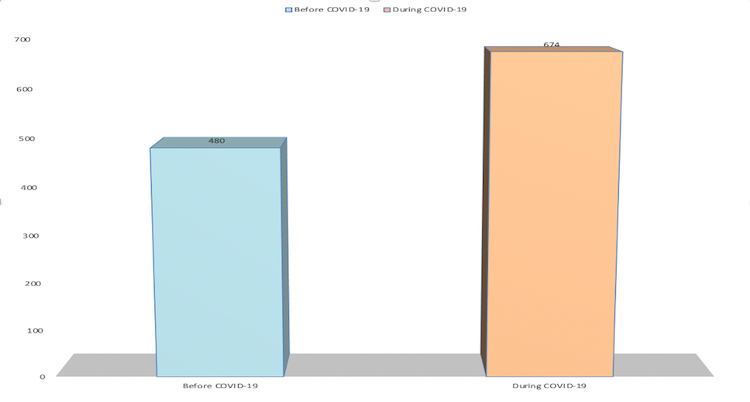
Figure 2: Number of students utilising Lecturio pre and during COVID 19 period
Videoconference platform: The overall students’ participation on Zoom classes was 60.9%, however, the majority, 90%, were MD5 while only 45% were BSc. Lab 2 (Figure 3).
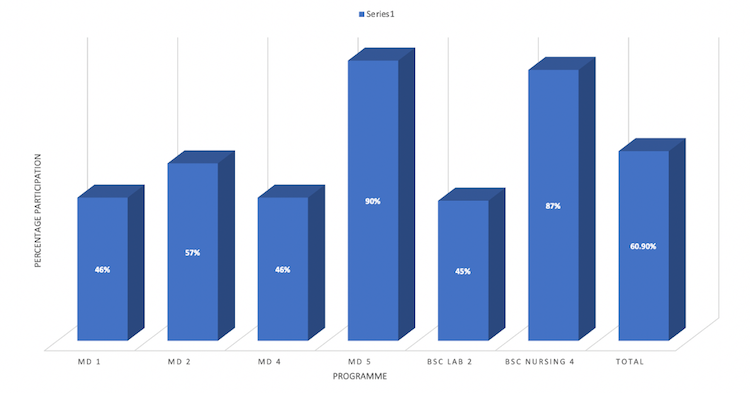
Figure 3: Utilisation of Video Conferencing Platform during university closure
Students’ perception on accessibility of the e-learning platforms at their premises after university closure on was rated with sCns of 65.4%. The strength of consensus measure on perception of accessibility for Leo was 78%, Lecturio, 65%, and the ticketing system and Zoom were 59% each (Table 3).
Table 3: Strength of consensus on ease of access of learning platforms in the students’ areas
Platform |
n |
VE |
E |
N |
D |
VD |
Mean (SD) |
sCns (%) |
LCMS+/Leo |
859 |
289 (33.6) |
336 (39.1) |
142 (16.5) |
72 (8.4) |
20 (2.3) |
3.9 (1.0) |
77.6 |
Lecturio |
816 |
115 (14.1) |
304 (37.3) |
228 (27.9) |
119 (14.6) |
50 (6.1) |
3.4 (1.1) |
65.2 |
Ticket system |
778 |
87 (11.2) |
200 (25.7) |
296 (38.0) |
126 (16.2) |
69 (8.9) |
3.1 (1.1) |
59.4 |
Zoom |
829 |
122 (14.7) |
261 (31.5) |
189 (22.8) |
154 (18.6) |
103 (12.4) |
3.2 (1.2) |
59.5 |
|
|
|
|
|
|
Mean sCns |
65.4 |
|
VE = Very Easy, E = Easy, N = Neither easy nor difficult, D = Difficult, VD = Very difficult
From the student perspective, support from class representatives was rated highly by students (sCns = 86%) followed by support from family member(s) or friends (sCns @ 84%), while access to a good Internet connection at home was rated low (sCns @ 65%). The overall sCns on support of entities was 79%. On the other hand, there was very strong consensus from faculty members on the helpfulness of various College entities with strength of consensus measures ranging from 92% for support available from the LMS team, to 83% for support from colleague(s) to manage their workload with overall mean sCns of 87% (Figure 4).
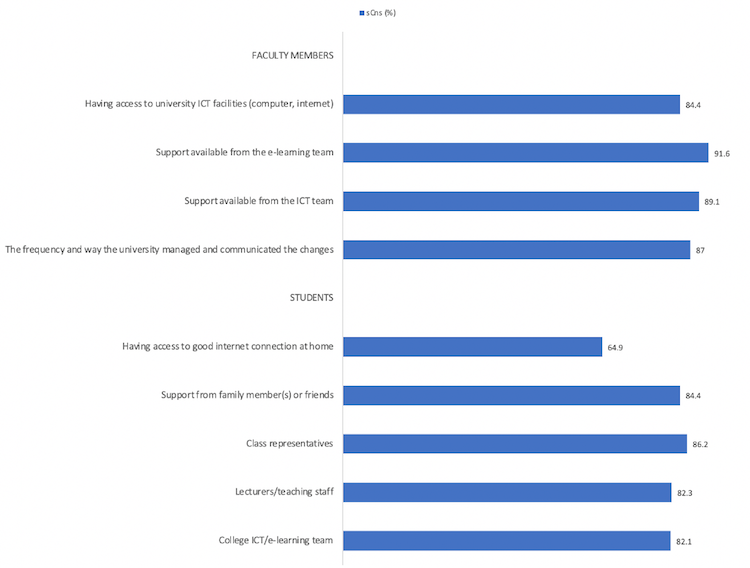
Figure 4: Strength of consensus on support from various entities
Among 865 students, more than two-thirds (603, 69.7%) owned a smartphone while tablets and desktop computers were less commonly owned, (< less than 15% of students). Nineteen out of 865 students (2.2%) did not own any type of computing device (Figure 5).
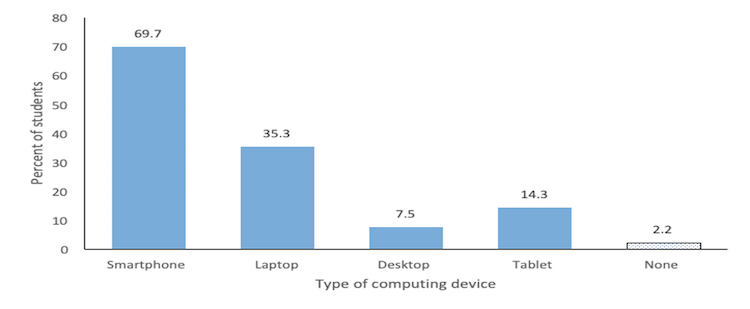
Figure 5: Students’ ownership of computing devices by type
Identified Challenges by Students and Faculty Members During Distance Learning and Teaching
The challenges faced by students included the cost of purchasing mobile Internet bundles (67.4%), gaining access to good quality Internet (65%), finding time to study (59.2%), getting help when there is something one does not know/understand (57.2%), collaborating online with fellow students (55.6%), and missing informal conversations with teachers and fellow students (53.5%) (Figure 6).
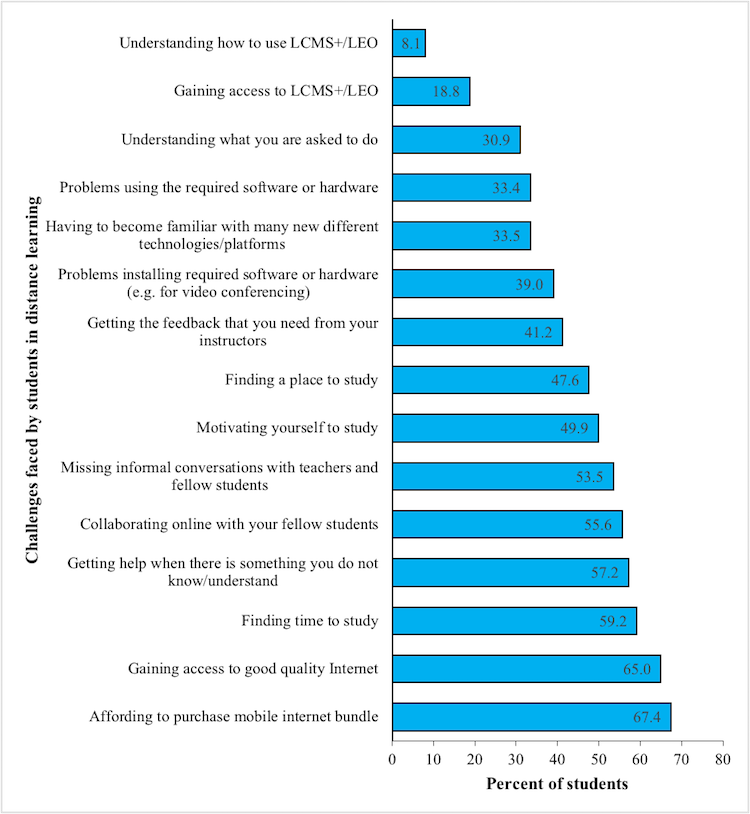
Figure 6: Distribution of challenges faced by students in distance learning during the lockdown (N = 865)
The main challenges that were encountered by faculty included unstable network connectivity, students not able to access and join the system, poor responses from students to download materials, and inability of conducting practical sessions.
The study revealed that utilisation of e-learning platforms increased to a great extent during the lockdown, with Leo being more preferred. It was also observed that the majority of students own and utilise smartphones for learning purposes. Both students and faculty showed the importance of the support from various university entities for their role as a link between students, faculty and e-learning experts. Quality and access to reliable Internet services/high cost of Internet bundles were noted as major challenges to uptake of online learning during the lockdown.
The high preference of Leo to other e-learning platforms could be explained due to the fact that Leo is the primary system and it integrates the other two systems. Also, students’ perception of relatively high accessibility of Leo compared to other e-learning platforms could also be an alternative explanation for the preference. Furthermore, since the other two platforms are video-oriented and therefore need high-speed Internet to utilise, they pose a challenge in terms of affordability as was indicated by the students. Identical findings were also observed with students from Princeton University in the United States (Gilbert, 2020) and Hungarian Higher Education Institutions (IAU, 2020) whereby the Internet affordability brought difficulties for the video conferences and real-time video classes.
Moreover, among the computing devices used to access online platforms, smartphones and laptops were commonly used devices that played a part in smoothing the accessibility and utilisation of the e-resources. Similar findings were observed in the study conducted in Australia and Turkey (Roberts & Rees, 2014; Yilmaz, 2016). The authors revealed that students prefer using mobile devices compared to other devices for the reason that learning can occur anywhere and anytime. These reflect the situation in our area as most students’ own mobile devices and use them for their studies as indicated during the pandemic time.
Furthermore, the study highlighted challenges faced with learning and teaching during the outbreak despite the majority being able to access the systems. Cost of purchasing mobile Internet bundles, gaining access to good quality Internet, collaborating online with fellow students and missing informal conversations with teachers were the common challenges faced by students during the lockdown. This was in line with the study on the effect of COVID-19 on education among 52 African countries (eLearning Africa, 2020). To our knowledge, these students who have been accessing student WiFi at the College, were given space for their studies, including private and discussion rooms, hence, being away from the College during the pandemic led to the above challenges. Additionally, poor Internet connection and inability to carry out practical sessions were the major challenges highlighted by faculty members during the university lockdown.
Teaching and learning in medical education were possible despite the lockdown, through carefully pre planned e-learning practices. The institution was able to rapidly migrate from blended to online learning during the pandemic with few interventions to facilitate the transition. Institutions of higher learning in low- and middle-income countries should invest in and harness technology with the purpose of facilitating e-learning practices, even on-campus learning and teaching. Moreover, we call upon Internet service providers to lower their prices for academic learning activities since the Internet is no longer a luxury but a necessity in low and middle-income countries.
Acknowledgement: This study received support from the U.S. National Institutes of Health through the Health-Professional Education Partnership Initiative (HEPI) Grant # R25TW011227.
Also, thanks to KCMUCo students and teaching staff, KCMUCo management, Chrispina Tarimo, Gabriel Msuka, Deodatus Mogella, Prof. Alfred Mteta, Ahaz Kulanga, Dr. Charles Muiruri and Prof. John Bartlett for their contributions.
eLearning Africa. (2020). The effect of COVID-19 on education in Africa and its implications for the use of technology. Retrieved from The_effect_of_Covid-19_on_Education_in_Africa.pdf
Gilbert. (2020). Two weeks into Zoom, students reflect on challenges of online learning. The Princetonian. https://www.dailyprincetonian.com/article/2020/04/two-weeks-into-zoom-students-reflect-on-challenges-of-online-learning
Hodges, C., Moore, S. & Lockee, B. (2020). The difference between emergency remote teaching and online learning. https://er.educause.edu/articles/2020/3/the-difference-between-emergency-remote-teaching-and-online-learning
IAU. (2020). Regional/nationalperspectives on the impact of COVID-19 on higher education. https://www.iau-aiu.net/IMG/pdf/iau_covid-19_regional_perspectives_on_the_impact_of_covid-19_on_he_july_2020_.pdf
Irby, D. M., Cooke, & Molly, M.D. (2010). Calls for reform of medical education by the Carnegie Foundation for the advancement of teaching: 1910 and 2010. Academic Medicine, 85(2). https://journals.lww.com/academicmedicine/fulltext/2010/02000/calls_for_reform_of_medical_education_by_the.18.aspx
Lisasi, E. et al. (2014). Modernizing and transforming medical education at the Kilimanjaro Christian Medical University College. Academic Medicine: Journal of the Association of American Medical Colleges, 89(8 Suppl), S60-64. https://doi.org/10.1097/ACM.0000000000000327
Naciri, A., Baba, M. A., Achbani, A., & Kharbach, A. (2020). Mobile learning in higher education: Unavoidable Alternative during COVID-19. Aquademia, 4(1), ep20016. https://doi.org/10.29333/aquademia/8227
Reimers, F., Schleicher, A., Saavedra, J. & Tuominen, S. (2020). Supporting-the-continuation-of-teaching-and-learning-during-the-COVID-19-pandemic. https://www.oecd.org/education/Supporting-the-continuation-of-teaching-and-learning-during-the-COVID-19-pandemic.pdf
Roberts, N., & Rees, M. (2014). Student use of mobile devices in university lectures. Australasian Journal of Educational Technology, 30(4), Article 4. https://doi.org/10.14742/ajet.589
Rose, S. (2020). Medical student education in the time of COVID-19. JAMA, 323(21), 2131–2132. https://doi.org/10.1001/jama.2020.5227
Skochelak, S. E., & Stack, S. (2017). Creating the medical schools of the future. Academic Medicine, 92(1). https://journals.lww.com/academicmedicine/fulltext/2017/01000/creating_the_medical_schools_of_the_future.11.aspx
Tibyampansha, D., Ibrahim, G., Kapanda, G., Bartlet, J., Tarimo, C., Mteta, K., & Muiruri, C. (2017). Implementation of a Learning Management System for medical students: A case study of Kilimanjaro Christian Medical University College.
Vovides, Y., et al. (2014). A systems approach to implementation of eLearning in medical education: Five MEPI schools’ journeys. Academic Medicine: Journal of the Association of American Medical Colleges, 89(8 Suppl), S102-106. https://doi.org/10.1097/ACM.0000000000000347
Watson, J. (2008). Blending learning: The convergence of online and face-to-face education. https://eric.ed.gov/?id=ED509636
Yilmaz, O. (2016). E-Learning: Students input for using mobile devices in science instructional settings. Journal of Education and Learning, 5(3), 182–192. https://eric.ed.gov/?id=EJ1104721
Authors:
Glory Ibrahim is a Senior Learning Management System Specialist, Kilimanjaro Christian Medical University College (KCMUCo), Sokoine Road, Moshi, Tanzania. Email: glory.ibrahim@kcmuco.ac.tz
Heavenlight Luzinge is a Learning Management System Administrator, Kilimanjaro Christian Medical University College (KCMUCo), Sokoine Road, Moshi Tanzania.heavenlight.luzinge@kcmuco.ac.tz
Gibson Kapanda is a Statistician, Kilimanjaro Christian Medical University College (KCMUCo), Sokoine Road, Moshi Tanzania. Email:gibson.kapanda@kcmuco.ac.tz
Cite this paper as: Ibrahim, G., Luzinge, H. & Kapanda, G. (2020). Teaching and learning experiences in medical education during the COVID-19 pandemic: The case of Kilimanjaro Christian Medical University College (KCMUCo), Tanzania. Journal of Learning for Development, 7(3), 433-446.